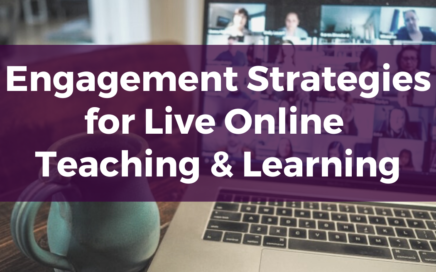
Advanced Techniques with Canvas
Advanced Techniques with Canvas You must be an employee of a California Community College to enroll in this course. Description This 4-week course builds on your experience with Canvas […]

Advanced Techniques with Canvas You must be an employee of a California Community College to enroll in this course. Description This 4-week course builds on your experience with Canvas […]
Equitable Grading Strategies What do grades really measure and how do they perpetuate systemic racism in higher education? How can we more accurately and more equitably indicate learning progress? Description […]

Engagement Strategies for Live Online Teaching and Learning You must be an employee of a California Community College to enroll in this course. Description Engaging live sessions in online classes […]

This article is part one of a two-part series. The next part will include a showcase of faculty capstone projects from the CVC/@ONE Advanced Certificate in Online Teaching Principles. I […]
Data Training and Coaching for Higher Education Professionals Description Data analytics is the science and art of drawing actionable insights from data. Analytics is used in a higher education environment […]
Introduction to Asynchronous Online Teaching & Learning You must be an employee of a California Community College to enroll in this course. Description Great teaching can happen anywhere, but teaching […]
The ABCs of Online Course Design Description The online learning environment is distinct from a traditional classroom environment and calls for different skills, strategies and perspectives. Happily, the OEI’s Course […]
Introduction to Designing for Accessibility Description We want all our students to have a great learning experience, don’t we? Designing with usability/accessibility in mind gives ALL students the chance to learn more […]
5-Day Challenge: Creating Accessible Canvas Content Description n this short “Do it For Yourself” challenge, you will not only learn how to create accessible course content from the beginning of […]

Take our new challenge and get your Canvas course organized in 5-days. You can do it!
5-Day Challenge: Organizing your Canvas Course Description Course design is a vital part of equitable, asynchronous online learning that helps to promote a welcoming, engaging, and effective learner experience. This […]
Self-Paced Distance Mental Health for Clinicians Description This is a self-paced version of our popular Distance Mental Health for Clinicians Course, 3-week course. The material is provided for your exploration. […]